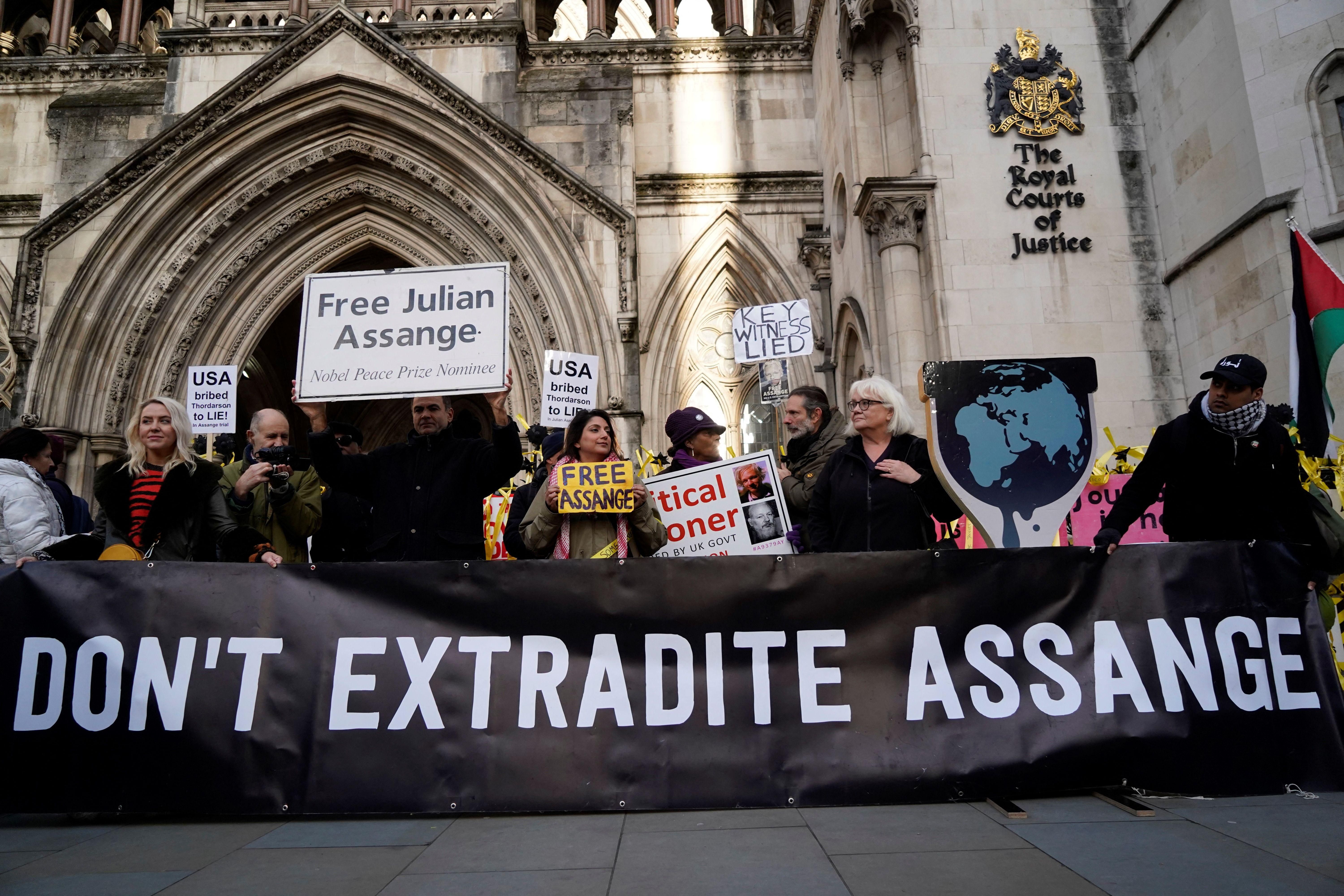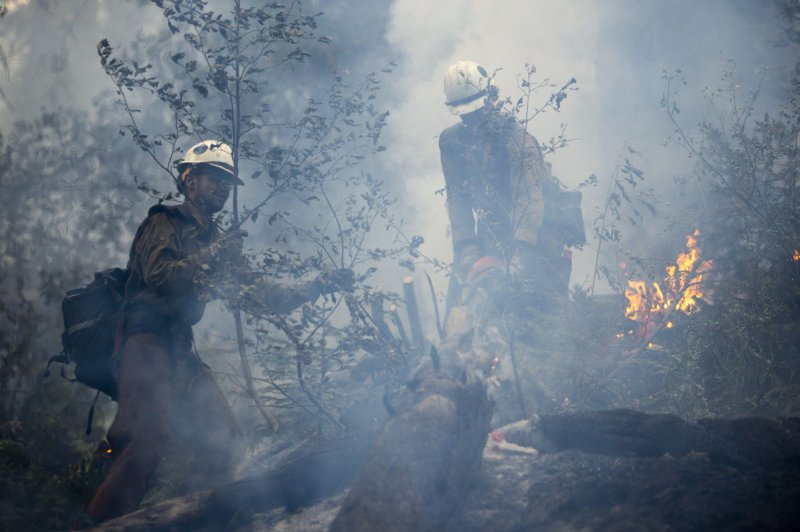UPDATED
Rights Groups Warn Extradition of Assange Would Have 'Dangerous Implications for Future of Journalism'
The secretary-general of Reporters Without Borders called on the U.S. and U.K. governments to "stop to this more than decade-long persecution once and for all."

WikiLeaks founder Julian Assange holds a press conference at Park Plaza Hotel on October 23, 2010 in London. A series of leaks of American military documents, nearly 400,000 in total, were released by the whistleblowing website Wikileaks. The files detail torture and the abuse of Iraqi detainees. (Photo: Dan Kitwood/Getty Images)
ANDREA GERMANOSDecember 10, 2021
A chorus of international human rights and press freedom groups roundly condemned a British court's Friday ruling that WikiLeaks founder and publisher Julian Assange can be extradited to the United States where he could face torturous conditions and life in prison.
"Julian Assange should be immediately released, and steps taken to ensure no journalist, publisher, or source can ever be targeted in this way again."
"This is a travesty of justice," said Nils Muižnieks, Europe director for Amnesty International.
Muižnieks was part of a chorus of condemnation that swiftly followed the High Court decision, which blocks a lower court's January ruling rejecting the U.S. government's attempt at extradition because it would be "oppressive by reason of Assange's mental health" and create "substantial" risk of him dying by suicide.
The new ruling marks in a win for the U.S. government—which has charged Assange with 17 counts of violating the Espionage Act related to his publication of classified documents exposing American war crimes. Critics like Reporters Without Borders (RSF), however, say the ruling represents a far-reaching and alarming attack on journalistic freedoms.
"We condemn today's decision, which will prove historic for all the wrong reasons," said RSF Secretary-General Christophe Deloire.
"We fully believe that Julian Assange has been targeted for his contributions to journalism, and we defend this case because of its dangerous implications for the future of journalism and press freedom around the world," Deloire said. He also called for "a stop to this more than decade-long persecution once and for all."
Related Content

Press Freedoms Under 'Grave Threat' as British Court Rules Assange Can Be Extradited to US
The Committee to Protect Journalists drew attention to ruling coinciding with the close of President Joe Biden's Summit for Democracy and the awarding of Nobel prizes to journalists Maria Ressa and Dmitry Muratov.
Robert Mahoney, the group's deputy executive director said, "The U.S. Justice Department's dogged pursuit of the WikiLeaks founder has set a harmful legal precedent for prosecuting reporters simply for interacting with their sources."
"The Biden administration pledged at its Summit for Democracy this week to support journalism," said Mahoney. It could begin "by removing the threat of prosecution under the Espionage Act now hanging over the heads of investigative journalists everywhere."
RSF director of international campaigns Rebecca Vincent similarly said the ruling represents "a bleak moment for journalists and journalism around the world, on the very day when we should be celebrating the awarding of the Nobel Peace Prize to two journalists and urging states to uphold the commitments to media freedom they have just reaffirmed at the U.S.-led Summit for Democracy."
“The U.S. government's indictment poses a grave threat to press freedom both in the United States and abroad."
The U.S., she added, should "truly lead by example and close this case now before further damage is done. Julian Assange should be immediately released, and steps taken to ensure no journalist, publisher, or source can ever be targeted in this way again."
Muižnieks—who rejected as "deeply flawed" U.S. assurances to the court that Assange wouldn't be held in solitary—likewise warned of wide reverberations of the attack on Assange.
“The U.S. government's indictment poses a grave threat to press freedom both in the United States and abroad," he said. "If upheld, it would undermine the key role of journalists and publishers in scrutinizing governments and exposing their misdeeds would leave journalists everywhere looking over their shoulders."
The legal team for Assange, who's been jailed at the U.K. high-security Belmarsh Prison since 2019, has vowed to appeal.
Warning of "deeply concerning implications for press freedom," Daniel Gorman, director of English PEN, said the decision "must be reviewed by the Supreme Court."
"The legal charges filed against Julian Assange contain activities that are central to the work of investigative journalists," he said, "and his extradition could therefore set a devastating precedent for journalists worldwide. We continue to call on U.S. authorities to drop these deeply problematic charges and call on the Home Secretary to block this extradition."
Our work is licensed under Creative Commons (CC BY-NC-ND 3.0). Feel free to republish and share widely.
Court ruling puts Julian Assange a step closer to US extradition



Stella Moris, partner of WikiLeaks founder Julian Assange, speaks to media outside
the Royal Courts of Justice following the appeal against Assange's extradition in
London on Friday, December 10. Photo: REUTERS/Henry Nicholls
Tom Pilgrim
December 11 2021
British appellate court opened the door yesterday for Julian Assange to be extradited to the United States by overturning a lower court’s decision that the WikiLeaks founder’s mental health was too fragile to withstand the US criminal justice system.
The High Court in London ruled that US assurances were enough to guarantee Mr Assange would be treated humanely and directed a lower court judge to send the extradition request to Britain’s interior minister for review.
Home Secretary Priti Patel, who oversees law enforcement in the UK, will make the final decision.
“There is no reason why this court should not accept the assurances as meaning what they say,’’ the High Court ruling stated. “There is no basis for assuming that the USA has not given the assurances in good faith.”
Mr Assange’s fiancée, Stella Moris, called the decision a “grave miscarriage of justice” and said Mr Assange’s lawyers would seek to appeal to the UK Supreme Court.
“We will fight,” Ms Moris said outside court, where supporters gathered with banners demanding Mr Assange’s release.
“Every generation has an epic fight to fight and this is ours, because Julian represents the fundamentals of what it means to live in a free society,” she said.
Mr Assange (50) is currently being held at London’s high-security Belmarsh Prison. The High Court ordered that he remain in custody pending the outcome of the extradition case.
In January, a lower court judge refused the US request to extradite Mr Assange to face spying charges over WikiLeaks’ publication of secret military documents a decade ago. District Judge Vanessa Baraitser denied extradition on health grounds, saying the Australian citizen was likely to kill himself if held under harsh US prison conditions.
James Lewis, a lawyer for the US government, said Mr Assange “has no history of serious and enduring mental illness” and does not meet the threshold of being so ill that he cannot resist harming himself.
US authorities have told British judges that if Mr Assange is extradited for prosecution, he would be eligible to serve any US prison sentence he receives in his native Australia. The authorities also said he wouldn’t be held at the supermax penitentiary in Florence, Colorado, the highest-security prison in the United States.
The US has indicted Mr Assange on 17 espionage charges and one charge of computer misuse over WikiLeaks’ publication of thousands of leaked military and diplomatic documents. The charges carry a maximum sentence of 175 years in prison, although Lewis said “the longest sentence ever imposed for this offense is 63 months.”
Human rights and press freedom groups have condemned a High Court ruling that Mr Assange can be extradited as a “travesty of justice” and “hammer-blow to free expression”.
Responding to the decision Christophe Deloire, secretary-general of Reporters Without Borders (RSF), said: “We condemn today’s decision, which will prove historic for all the wrong reasons.
“We fully believe that Julian Assange has been targeted for his contributions to journalism, and we defend this case because of its dangerous implications for the future of journalism and press freedom around the world.”
Nils Muiznieks, Amnesty International’s Europe director, said: “This is a travesty of justice. By allowing this appeal, the High Court has chosen to accept the deeply flawed diplomatic assurances given by the US that Assange would not be held in solitary confinement in a maximum security prison.
“The fact that the US has reserved the right to change its mind at any time means that these assurances are not worth the paper they are
written on.”
He added: “If extradited to the US, Julian Assange could not only face trial on charges under the Espionage Act but also a real risk of serious human rights violations due to detention conditions that could amount to torture or other ill-treatment.”

















